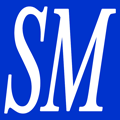Templates for TemplaVoilà
Congratulations. If you can see this page, TYPO3 runs perfectly together with one of the YAML templates on your server. You are using version 4.0.8
First Steps:
Change the default language
Find and edit
fileadmin/styles/[style]/TemplateRessources/pageTSconfig.txt
mod.SHARED {
defaultLanguageFlag = uk.gif
defaultLanguageLabel = english
}
Change the two lines to set the desired default language.
Find and edit (or use constant editor if you need help with the values)
fileadmin/styles/[style]/TemplateRessources/constants.txt
languageLocaleStandardLang = english
languageIsoCodeStandardLang = en
Add more languages
- Select the List module
- Select the top level page (UID 0)
- Click the icon and select New
- Within the wizard select Website Language
- Repeat steps 3 and 4 to add as much langauges as you need
- Use constant editor, category plugin-tx_dbttv-language to set the correct values for all your languages.
German language is already present!
The team of t3net wishes you the best success with your new website. Questions and answers about Templates for TemplaVoila you'll find in our Supportforum. Your are invited to discuss with us there or to ask questions. We will do our best to satisfy you.
Required extensions
All mandatory TYPO3 extensions
- css_styled_content
- templavoila
- indexed_search
- macina_searchbox
- tt_news
- sr_language_menu
are already installed, because db_ttv depends on them. You were not be able to install this extension without them.
Although you should install the following TYPO3 extensions, before you start to include content:
- syslanguage_flags
- date2cal
- felogin (sysext)
- api_macmade
- dropdown_sitemap
- tq_seo
- cron_accessiblemenus
- gov_accesskey
- rgtabs
- captcha
- maag_formcaptcha
Latter extensions are just a suggestion. Feel free to install any extension you need. If you are using the complete package, these extensions are installed already.
Boxes, images and standard content elements below the menu are possible, thanks to flexible content elements (FCEs). The round edges are plain CSS, no background graphics needed.
Boxes, images and standard content elements below the menu are possible, thanks to flexible content elements (FCEs). They can even be nested.

